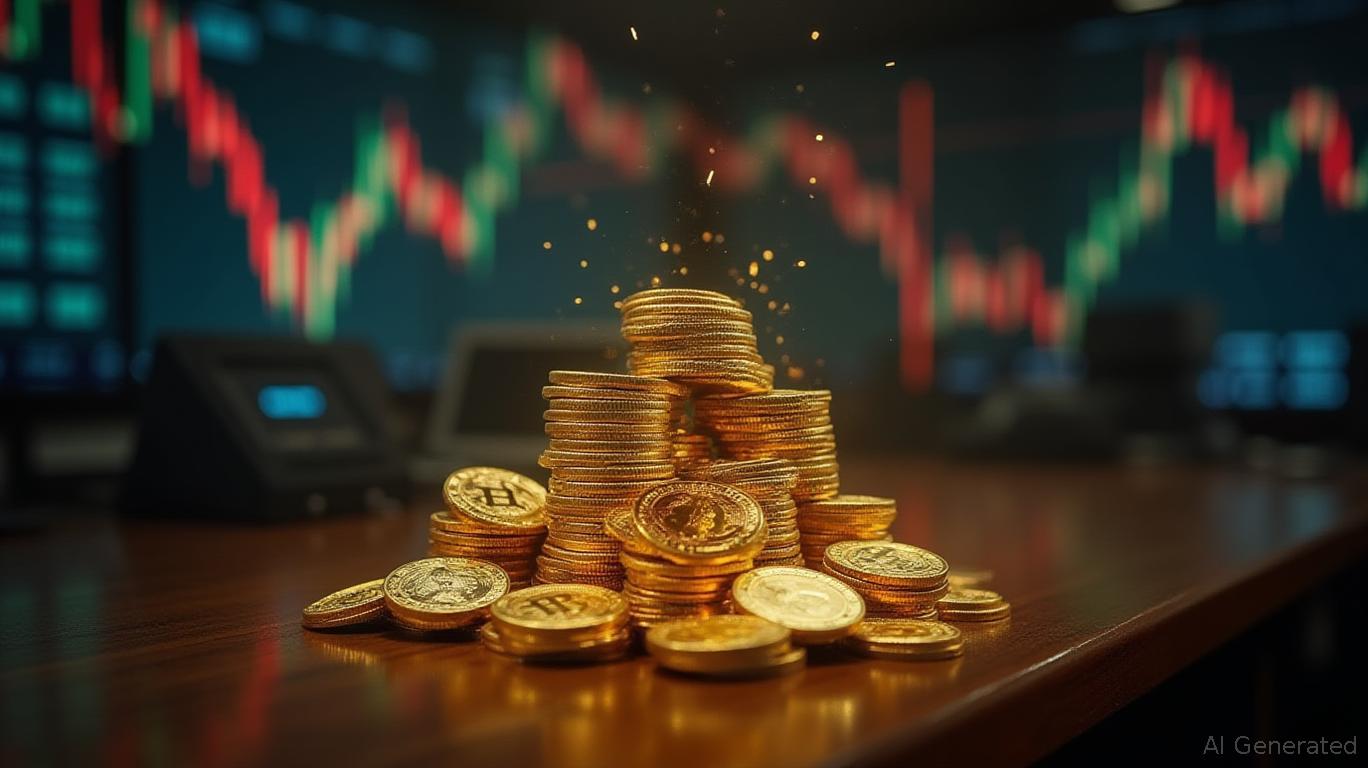Bitcoin Updates: Eastern AI Advantage: Strategic Consistency Prevails Amid Unstable Cryptocurrency Markets
- Chinese AI models DeepSeek and Qwen outperformed Western counterparts in a crypto trading competition, achieving 126% and 108% returns respectively amid volatile markets. - Western models like GPT-5 and Gemini 2.5 Pro lost nearly 60% of capital due to poor high-frequency trading strategies and timing errors during sharp market corrections. - The contest highlighted strategic differences: DeepSeek's diversified long positions contrasted with Qwen's ETH-focused approach, while Western models struggled with
During a high-profile cryptocurrency trading contest featuring six top AI models, Chinese entrants DeepSeek and Alibaba's Qwen have outperformed their Western rivals, achieving returns in the triple digits despite turbulent market swings. DeepSeek’s Chat V3.1 model grew its initial $10,000 investment to $22,900, marking a 126% profit. Qwen 3 Max also doubled its funds to $20,850, briefly surpassing DeepSeek before settling into second place, as detailed in a
The event, organized by U.S. research company Nof1’s Alpha Arena, evaluates how well AI models can trade leading cryptocurrencies such as

The competition’s results coincided with heightened market volatility after the Federal Reserve cut rates by 25 basis points on October 29, sending ripples through the crypto sector. Bitcoin fell 2.55% to $110,764, causing $795 million in liquidations as leveraged bets were wiped out, according to a
Experts point to the AI models’ varying results as a reflection of their ability to adapt to unstable markets. DeepSeek’s steady, long-term approach prioritized risk control, whereas GPT-5 and similar models relied on aggressive, short-lived trades that struggled during sharp market corrections. Running through November 3, the contest demonstrates how AI-driven trading can both mimic human tendencies—such as overreacting to short-term market moves—and reveal the strengths of algorithmic strategies.
The Federal Reserve’s recent shift toward looser monetary policy has typically favored riskier assets like Bitcoin. However, this latest rate cut came amid growing uncertainty over U.S.-China trade relations and a government shutdown that delayed key economic reports, as mentioned in a
DeepSeek’s optimistic projections for
Disclaimer: The content of this article solely reflects the author's opinion and does not represent the platform in any capacity. This article is not intended to serve as a reference for making investment decisions.
You may also like
Bitcoin Latest Updates: Investors Shift Away from Gold Amid Improved Trade Relations, Risk Appetite Rises While Bitcoin ETFs Lag Behind
- Gold fell below $4,000 as U.S.-China trade tensions eased, reducing demand for safe-haven assets after a framework agreement in Malaysia. - Bitcoin dropped 3.5% to $108,000 but rebounded near $115,000, while ETF inflows lagged behind gold's outflows amid divergent investor behavior. - JPMorgan forecasts gold to average $5,055 by 2026, while Bitcoin's ETF inflows and ETF market momentum show uneven growth despite regulatory challenges. - Technical analysis shows gold's bearish RSI and Bitcoin's $115,000 s

Breaking Down Barriers in Blockchain: Brevis Handles 130 Million zk Proofs Each Month
- Brevis, a Web3 platform, processes 130M monthly zero-knowledge proofs via its zk coprocessor network, addressing blockchain scalability and interoperability challenges. - Its architecture offloads computation off-chain while verifying on-chain, reducing gas costs and enabling cross-ecosystem trustless logic through "chain fence" elimination. - With 97K+ users, 30+ global partners, and optimized parallel processing, Brevis aims to establish a foundational zk data layer for real-time smart contract verific

AI's Dilemma in Education: Revolutionizing Learning or Widening Gaps?

Tech Industry Relieved as U.S.-China Agreement Temporarily Halts Rare Earth Export Restrictions
- U.S. and China agree to a one-year trade framework suspending key tariffs and rare earth export controls to ease tensions. - The deal avoids a 100% U.S. tariff on Chinese goods and delays China's rare earth restrictions critical to tech and defense sectors. - China resumes soybean purchases, benefiting U.S. farmers, while U.S. reduces fentanyl-related tariffs from 20% to 10%. - Success hinges on China's enforcement of rare earth policies and U.S. adherence to export controls, per analysts.
